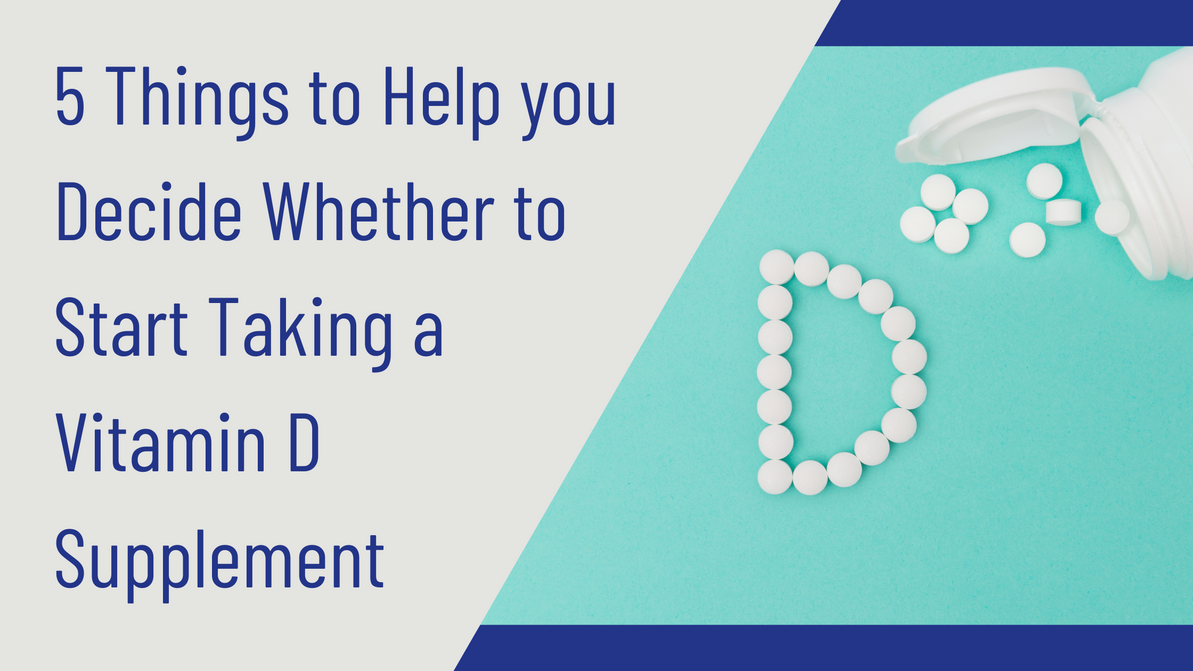5 Things to Help You Decide Whether to Start Taking a Vitamin D Supplement
The world of supplements is vast, and if you’re like most people, a bit confusing and intimidating to sort through all of the information. With approximately 29,000 supplements on the market today (just in the US) and around 1,000 more added to the mix annually (also just in the US), you’d hardly be to blame. [According to the FDA]
Whether you’ve been taking supplements for years “just because” or are asking yourself whether you should be, follow our Supplement Series for an overview of the whats, whys, and whos of individual supplements. (And please read our disclaimer at the end of this post.)
Check out our first post in the series all about vitamin B12 supplements here.
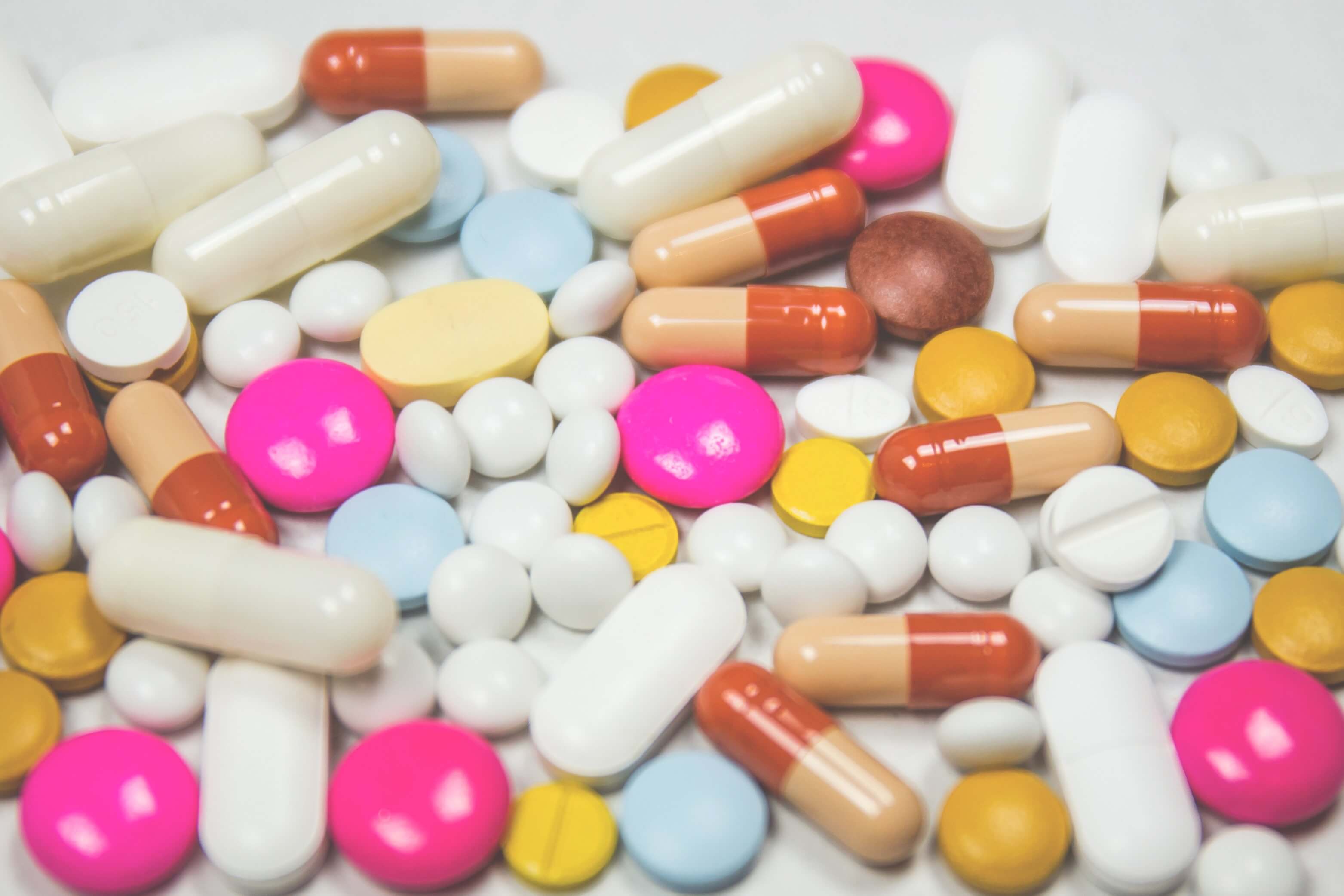
1. What is vitamin D, and why do we need it?
The first thing we need to tackle about vitamin D is that it isn’t actually a vitamin.
Yes, you read that correctly. No, the world isn’t trying to trick you. While technically a hormone, vitamin D is fat-soluble and is considered to be an essential vitamin because our bodies require it to function correctly.
Typically, this means consuming said vitamin in our diets or in the form of a supplement. In the case of vitamin D, we mostly get what we need from the sun (historically speaking), but we’ll cover this in more detail later in this post.
The reason why vitamin D is considered to be a hormone has to do with its regulatory role with calcium, the kidneys, and the definition of a hormone, which is basically a substance that tells other cells to do things.
The main reason that we need sufficient levels of vitamin D is for optimal bone health.
Without it, we wouldn’t be able to absorb calcium, which is essential for bone growth, as our bones are constantly undergoing remodeling.
But vitamin D doesn’t stop there. While bone health may be what most people think of when they think of vitamin D, it has quite a range when you look at its other roles in the body. It’s involved in reducing inflammation and lends a helping hand to the immune system. Vitamin D also helps to make sure our muscles and brain cells are functioning properly.

2. What happens if we don’t get enough?
Given that maintaining optimal bone health is vitamin D’s crowning achievement, it makes sense that without sufficient levels, our bones suffer the consequences. You may have heard of rickets, a bone disease that affects children who don’t have enough vitamin D and leads to soft and weak bones. And because children aren’t yet fully grown, the results are often misshapen bones, particularly a bowing effect in the legs.
In adults, a lack of vitamin D can lead to osteomalacia, which is similar to rickets in that it involves soft and weak bones. Since adults, unlike children, are fully grown, fractures are often the result of this disease.
Other symptoms of vitamin D deficiency may include pain, muscle weakness, seizures due to low calcium levels, and even dental abnormalities.
It’s also worth noting that symptoms may not present right away, though changes in bone structure may be evident on an x-ray.

3. How do we get it?
Historically speaking, humans have been able to fill their vitamin D needs from the sun, which is why it’s often referred to as the sunshine vitamin. The way it works is that vitamin D is synthesized in our bodies after our skin absorbs those glorious sun rays (UVB, to be exact).
It may not come as a shock to you that we humans haven’t exactly been spending as much time outdoors as we used to. Most of us work in offices and only have a chance to venture into the great outdoors on weekends. Unfortunately, this isn’t enough.
Making matters worse is that when we do find the time to enjoy some fresh air, we slather our skin with sunscreen to repel those big bad UV rays. We do this because skin cancer isn’t exactly a walk in the park.
While it is possible to balance sun exposure to optimize vitamin D levels but minimize skin cancer risk, the factors that contribute to this magical balance are too many for anyone to agree on an exact time recommendation. Some of these factors include location, time of year and day, skin color (the more melanin in the skin, the more time is needed in the sun), and remembering to apply sunscreen after a “short” period of direct sun exposure in the peak of summer.
Humans can also obtain some vitamin D through certain foods, with fatty fish like salmon and tuna, as well as fish liver oils, being among the best. Cheese, eggs, and even some mushrooms contain smaller amounts of vitamin D.
Alternatively, some people may turn to tanning beds as a way to boost vitamin D levels (and, of course, tan). Unfortunately, since tanning beds primarily emit UVA rays, this is an inefficient source of vitamin D. Furthermore, they significantly increase your risk of skin cancer.
As you may have guessed, the best (safest) way to ensure that you’re getting the right amount of vitamin D without the risk of skin cancer and the consequences of consuming too much fish (mercury poisoning) is through vitamin D supplements.
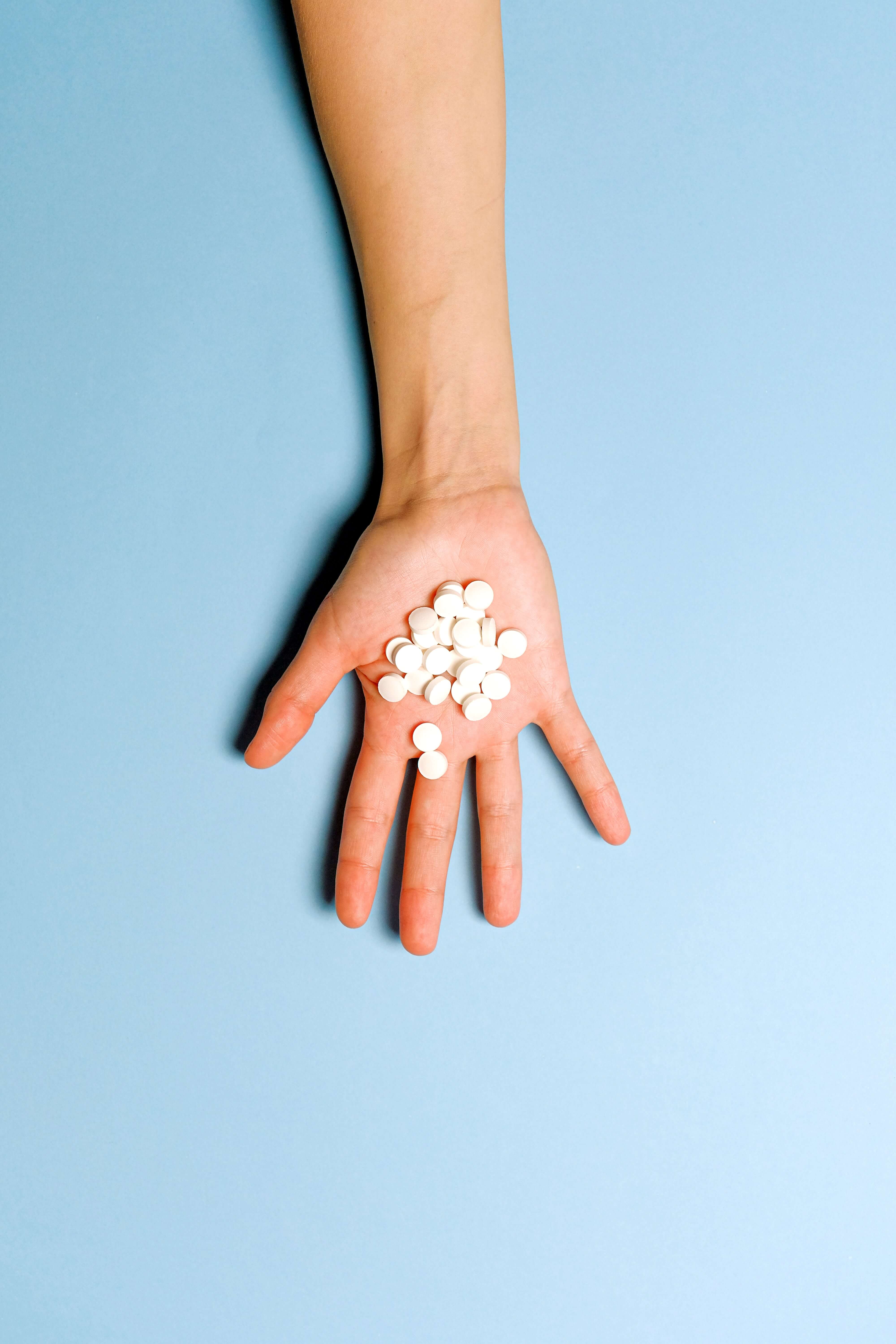
4. Who should consider vitamin D supplements?
Like most things in life, the answer to this question is it depends.
It depends on many things, including where you live in the world, the time of year, diet, skin color, and more.
For example, for someone who lives in Canada and even some of the northern states in the US, sun exposure is limited the majority of the year due to the long winters. This person may consider supplementing during those long winter months until they can enjoy an all too short summer and try to soak up some vitamin D naturally from the sun.
Those with darker skin tones, and therefore higher melanin levels (a natural skin pigment), may also be at risk of inadequate vitamin D levels and may consider taking vitamin D supplements. This is because the higher levels of melanin get in the way of producing as much vitamin D from sunlight as those with lighter skin tones.
Another group at risk of inadequate vitamin D is breastfed infants, whether exclusively or even partially. This is because breastmilk alone does not provide enough vitamin D without supplementation. Therefore, vitamin D supplements are recommended to breastfeeding moms. (Consult your pediatrician or healthcare provider for recommended amounts).
Other groups who may want to consider taking vitamin D supplements include:
-Older adults (due to factors including a decrease in the ability to make vitamin D, time spent indoors, and a lower than average dietary intake)
-Those with limited sun exposure (for reasons including location and that daily 9-5 grind, but also clothing)
-Those with conditions that limit fat absorption
-Those who are obese or have had gastric bypass surgery (due to absorption issues).
While there is a risk of taking too much (10,000IU or more daily, according to NutritionFacts.org), vitamin D supplements are generally considered to be safe. However, they may interact with certain medications, such as anticonvulsants, certain cholesterol and heart medications, thiazide diuretics, steroids, and stimulant laxatives. As always, consult your healthcare provider if you’re taking any medications before taking any supplements.
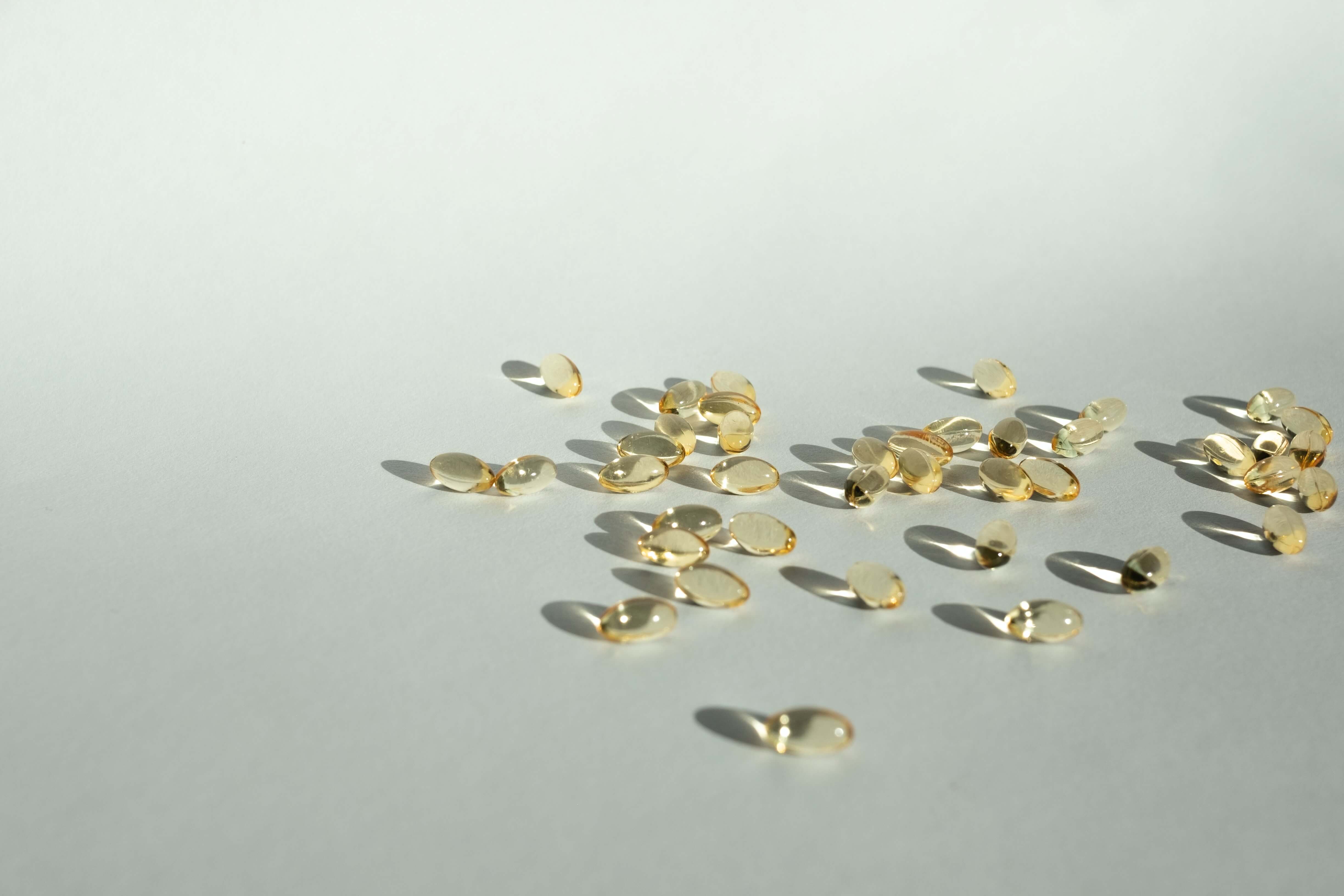
5. A note about the types of vitamin D supplements, D3 and D2
The main difference between vitamin D3 and D2, besides their names (cholecalciferol and ergocalciferol, respectively), is how they’re made. While vitamin D3 supplements are sourced from plants or animals, vitamin D2 supplements are sourced from mushrooms.
Since both forms are well absorbed in the otherwise healthy human body, both appear to do a good job of helping to maintain sufficient levels of vitamin D.
However, something to note is the different sources of vitamin D3 supplements, plants, or animals. If you are vegan or vegetarian, make sure that your vitamin D supplement is vegan or vegetarian-friendly. (It will often say on the packaging.)
Regardless of which type of vitamin D supplement you choose, it is best to take your vitamin D supplement with a meal, particularly one with a source of fat since it’s fat-soluble.
As blood tests for vitamin D levels are becoming increasingly common (25-hydroxyvitamin D being the most common test), you may already know whether you need a vitamin D supplement. If not, it is not unreasonable to request such a test from your healthcare provider.
Given all the risks associated with insufficient vitamin D levels and the general safety of supplementation, taking vitamin D supplements seems to be the way to go. If you’ve consulted your doctor and have decided to start taking a vitamin D supplement or are already taking one and would like to switch, check out two of our supplements that may meet your vitamin D needs here and here.
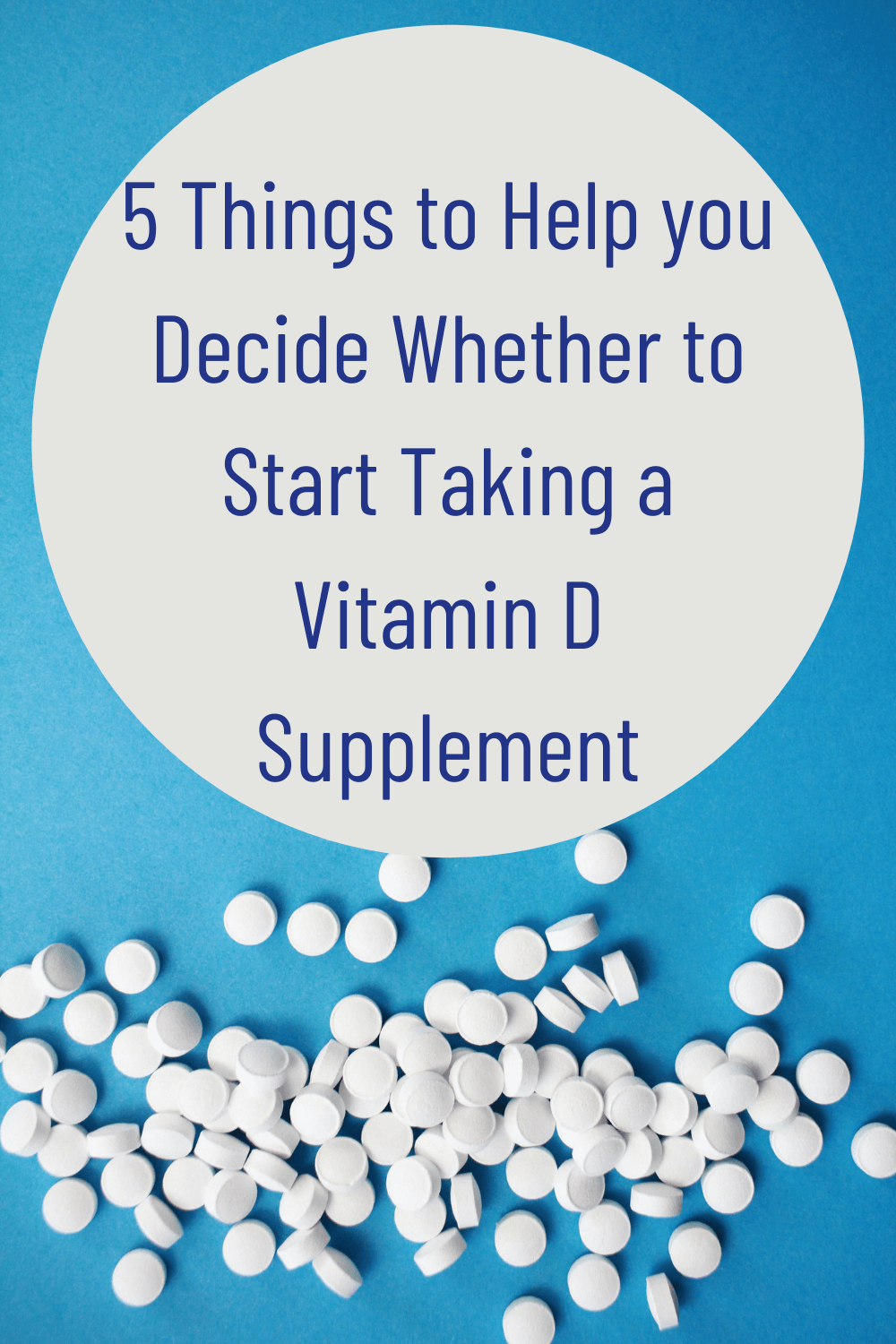
Health/Medical Disclaimer
This blog post does not provide health or medical advice. This blog post is for informational and educational purposes only and is not a substitute for professional health or medical advice. Before taking any actions based upon such information, we encourage you to consult with the appropriate medical and healthcare professionals. We do not provide any kind of health or medical advice. The use or reliance of any information contained on this blog is solely at your own risk.
Sources:
https://www.mayoclinic.org/drugs-supplements-vitamin-d/art-20363792 https://ods.od.nih.gov/factsheets/VitaminD-HealthProfessional/ https://ods.od.nih.gov/factsheets/Calcium-HealthProfessional/ https://www.health.harvard.edu/staying-healthy/taking-too-much-vitamin-d-can-cloud-its-benefits-and-create-health-risks https://www.yourhormones.info/hormones/vitamin-d/#:~:text=Vitamin%20D%20is%20a%20hormone,the%20development%20of%20strong%20bones https://www.hormone.org/your-health-and-hormones/glands-and-hormones-a-to-z/hormones/vitamin-d https://www.mayoclinic.org/diseases-conditions/rickets/symptoms-causes/syc-20351943#:~:text=Rickets%20is%20the%20softening%20and,calcium%20and%20phosphorus%20from%20food https://www.mayoclinic.org/diseases-conditions/osteomalacia/symptoms-causes/syc-20355514 https://www.ncbi.nlm.nih.gov/pmc/articles/PMC3897598/#:~:text=Vitamin%20D%20is%20the%20sunshine,turn%20isomerizes%20into%20vitamin%20D3 https://nutritionfacts.org/2019/05/02/the-best-source-of-vitamin-d/ https://nutritionfacts.org/video/how-much-vitamin-d-should-you-take/ https://my.clevelandclinic.org/health/articles/15050-vitamin-d--vitamin-d-deficiency#:~:text=Your%20doctor%20can%20order%20a,take%20blood%20from%20a%20vein https://nutritionfacts.org/video/vitamin-d-pills-vs-tanning-beds/
Recent Posts
-
Are sunscreen ingredients harmful?
Sunny days can bring a lot of fun. Going out for a swim, spending time in nature, or relaxing on the …18th Mar 2024 -
The Veggie Debate: Does Cooking Vegetables Destroy Nutrients and the Best Ways to Cook Them
Vegetables are one of the healthiest foods you can choose. Some people downright hate them, while so …4th Mar 2024 -
Best Foods for COVID Recovery and Prevention
A few years ago, a new virus took the world by surprise. COVID-19 may look like the flu on the surfa …19th Feb 2024

